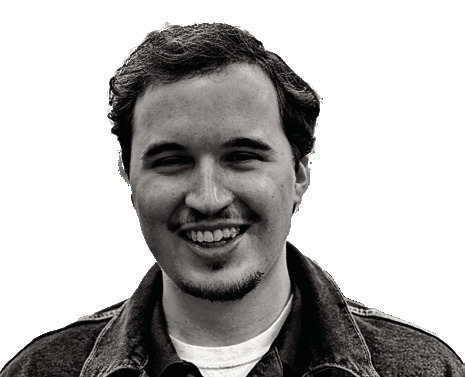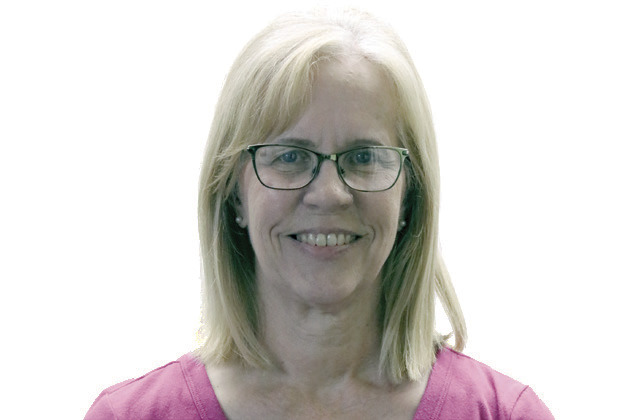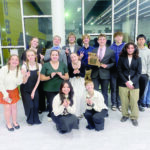The president-elect reached Philadelphia at 4 p.m. on Thursday, February 21, 1861. In response to warm greetings, Lincoln told a crowd that he hoped “to restore peace and harmony and prosperity to the country.” He added, however, “I shall do nothing inconsistent with the teachings of those holy and most sacred walls” of Independence Hall. “I have never asked anything that does not breathe from those walls,” Lincoln said. Paraphrasing Psalm 137, he added, “May my right hand forget its cunning and my tongue cleave to the roof of my mouth, if I ever prove false to those teachings” of the Constitution and the Declaration.
By now, Lincoln’s face was no longer clean-shaven. In October 1860, the 11-year-old Grace Bedell wrote to Lincoln and encouraged him to grow facial hair. “If you let your whiskers grow,” the Westfield, New York girl advised, “you would look a great deal better, for your face is so thin.” “All the ladies,” she added, “like whiskers, and they would tease their husbands to vote for you and then you would be president.” Four days later, Lincoln replied, writing, “As to the whiskers, having never worn any, do you think people would call it a piece of silly affection if I were to begin now? Your very sincere well-wisher, A. Lincoln.”
Ultimately, he took the girl’s suggestion to heart, and on Sunday, November 25, 1860— nineteen days after having been elected president and one month after Bedell’s letter—Lincoln sat for the photographer Samuel G. Altschuler in Chicago, Illinois, the finished portrait revealing a budding goatee.
Stopping in Westfield in February, Lincoln met briefly with Bedell while addressing a crowd at a train station. “He climbed down and sat down with me on the edge of the station platform,” Bedell recalled. “‘Gracie,’ he said, ‘look at my whiskers. I have been growing them for you.’ Then he kissed me. I never saw him again.”
On Friday, February 22, 1861, Lincoln stood in front of Independence Hall. Across Philadelphia citizens were celebrating George Washington’s birthday. Taking part in a morning ceremony, Lincoln “raised the starry banner of the republic.”
“The excitement was of a fearful character when the president-elect seized the rope to hoist the flag of the country to the crest of the staff over the State House,” The Philadelphia Press wrote. “The souls of all seemed starting from their eyes, and every throat was wide. The shouts of the people were like the roar of waves which do not cease to break.” The cheers lasted three minutes. “The expression of the president-elect was that of silent solemnity.” When Lincoln’s long arms “pulled at the halyards” and the flag was “kissed by the wind,” the crowd, “tumultuous before… became absolutely maniacal.”
Speaking moments before, Lincoln reflected on the meaning of Independence Hall. “I have never had a feeling politically that did not spring from the sentiments embodied in the Declaration,” he said. Lincoln admitted to pondering “what great principle or idea it was that kept [America] together.” It wasn’t “the mere matter of [political separation,” he said, “but that sentiment in the Declaration of Independence which gave liberty, not alone to the people of this country, but, I hope, to the world, for all future time.”
The principle “that all men are created equal,” Lincoln concluded, “gave promise that in due time the weight [of oppression] would be lifted from the shoulders of all men. This is the sentiment of the Declaration of Independence.” Lincoln asked, “can this country be saved upon that basis?” If not, “it will be truly awful.” “I would rather be assassinated on this spot than surrender it,” Lincoln resolved. “I have said nothing but what I am willing to live by, and, if it be the pleasure of Almighty God, die by.”
The Democratic press found Lincoln’s speech preposterous. “The parties to the Declaration of Independence were the white men of the colonies, and they asserted their equality with the white men of Great Britain,” The New York Herald corrected. “They did not assert the equality of negroes, for if they had done so they would have been ridiculed by all the world.” The Herald added, referencing the Dred Scott ruling, that the Declaration “does not recognize negroes unless as legitimate property.”
One month after Lincoln’s address at Independence Hall, Alexander Stephens spoke differently of the Declaration. The document was “fundamentally wrong,” he told a Savannah crowd. “Our new government is founded upon exactly the opposite idea [of natural freedom and equality]”: “subordination to the master race.”
Years earlier, in October 1858, Lincoln explained the Declaration in Alton, Illinois. The founders, he said, “did not mean to assert the obvious untruth that all were then actually enjoying that equality, or yet, that they were about to confer it immediately upon them.” Rather, they “simply meant to declare the right, so that the enforcement of it might follow as fast as circumstances should permit.”
Lincoln added that the founders “meant to set up a standard maxim for free society which should be familiar to all: constantly looked to, constantly approximated, and thereby constantly spreading and deepening its influence and augmenting the happiness and value of life to all people, of all colors, everywhere.”
Martin Luther King, Jr. would later describe it as a “promissory note.” As Barack Obama said in 2009, it is “the noble idea passed on from generation to generation: the Godgiven promise that all are equal, all are free, and all deserve a chance to pursue their full measure of happiness.”
Generations before today, it was Lincoln, standing in front of Independence Hall during the depths of the secession crisis, marshaling America’s moral forces to defend a truth that, as Alexander Hamilton wrote, is “written, as with a sunbeam, in the whole volume of human nature, by the hand of the divinity itself, and can never be erased or obscured by mortal power.”
Dakoda Pettigrew is a senior political science and history undergraduate student whose father went to school in Cassville. He lives in Tennessee and can be reached at pettigrewdakoda6@ gmail.com.







